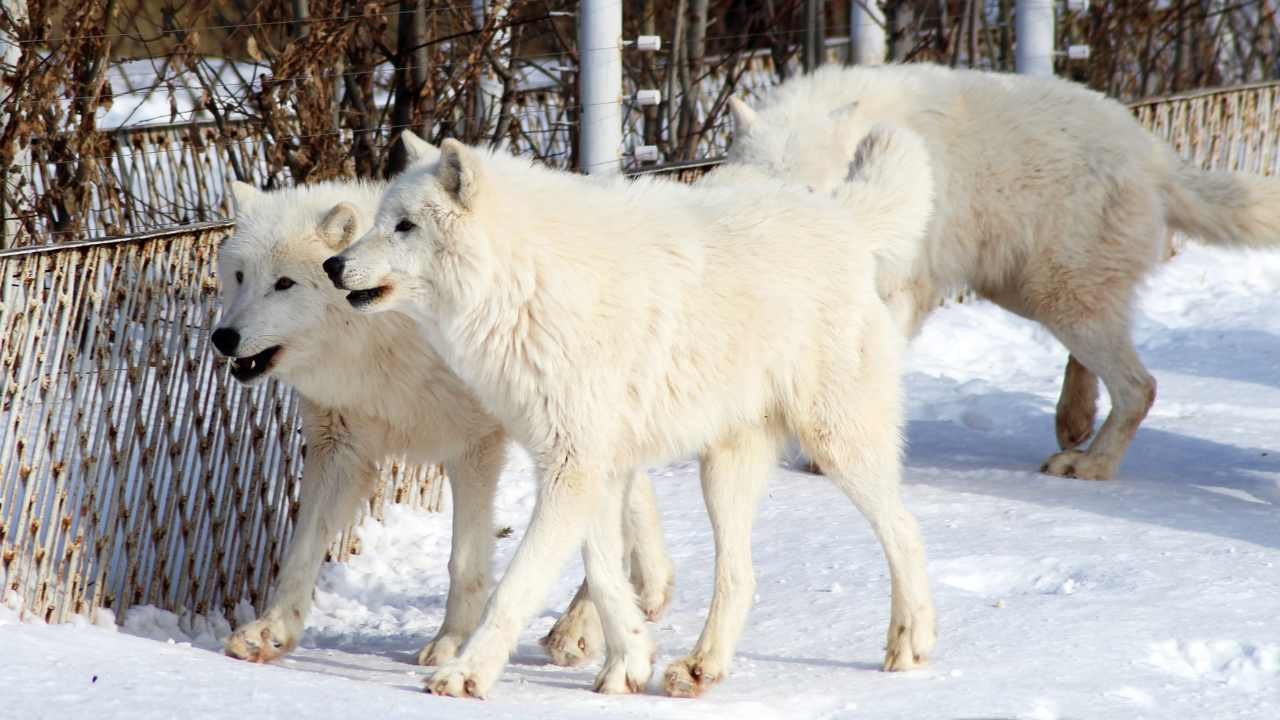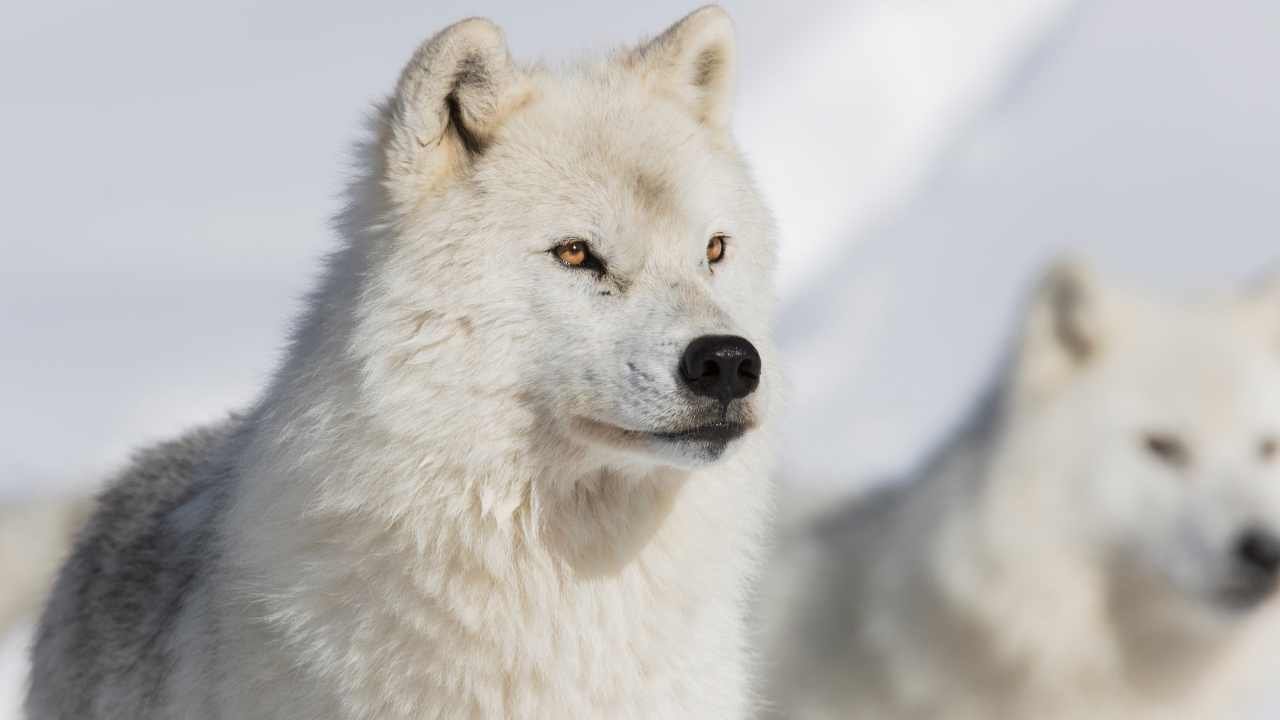Arctic wolf is a magnificent creature that roams the frigid lands of the Arctic regions. It has thick white fur and remarkable adaptability to extreme cold temperatures. However, as human activities continue to impact the delicate balance of ecosystems worldwide, it raises concerns about the population size and conservation status of these remarkable creatures. In this article, we will explore the current state of the Arctic wolf population, delving into the question: how many Arctic wolves are left in the world?
How Many Arctic Wolves Are Left In The World?

There are approximately 200,000 Arctic wolves left in the world today. These majestic creatures inhabit the Arctic regions of Greenland and North America, thriving in the harsh conditions of the Arctic tundra. They are wild animals that require specific habitats and have specialized needs that cannot be met in a domestic setting.
What are Arctic Wolves Predators?
Arctic wolves, as apex predators, do not have natural predators that specifically target them. They are well-adapted to their harsh environment and have evolved to survive in challenging conditions. However, they may face occasional conflicts with other species like polar bears for over-shared food resources but their population is not significantly threatened by natural predators.
Are Arctic Wolves Endangered?

Arctic wolves are not considered endangered. Their population is stable and is not currently at risk of extinction say’s International Union for Conservation of Nature (IUCN). The Arctic wolf’s isolated habitat in remote regions, away from human activity, has contributed to their conservation status.
Will Arctic Wolves Go Extinct?
The arctic wolf is the only sub-species of wolf that is not threatened yet and according to the current data, it doesn’t seem like Arctic Wolves will ever go extinct. However, if we do not control habitat loss, climate change, and other human activities which contribute to the loss of their population, soon Arctic wolves will be an endangered species.
What is the average lifespan of an Arctic wolf?
The average lifespan of an Arctic wolf in the wild is approximately 7 years. However, in captivity, Arctic wolves have been known to live longer, with lifespans of over 17 years. The individual’s lifespan can vary depending on various factors such as habitat conditions, availability of prey, and overall health and survival challenges in the wild or the type of care provided in captivity.
What factors have contributed to the decline in the Arctic wolf population?

The Arctic wolf faces multiple threats, including habitat loss and fragmentation caused by human activities such as industrial development and climate change. This leads to a restricted range and reduced access to prey.
Human-wildlife conflict in the form of hunting and trapping has significantly impacted the Arctic wolf population. Moreover, climate change is also causing sea ice loss and changes in prey availability, disrupting the wolves’ hunting patterns.
Another reason could be the decline in prey species like Caribou and Muskoxen. They can result in food scarcity and malnutrition. On the other hand, infectious diseases and parasites like canine distemper and ticks further contribute to population declines.
How Does Climate Change Affect Arctic Wolves?
Shifts in prey availability: Climate change can disrupt the delicate balance of Arctic ecosystems, leading to changes in the distribution and abundance of prey species such as muskoxen, Arctic hares, and caribou.
Loss of habitat: The melting of Arctic sea ice and permafrost due to climate change can result in the loss of crucial hunting grounds and denning sites for Arctic wolves causing them to compete with other predators for limited resources.
Changes in behavior and migration patterns: Climate change can disrupt the natural timing of migration and breeding for Arctic wolves, potentially impacting their reproductive success.
How do human activities affect the Arctic wolf population?

Human activities have a significant impact on the Arctic wolf population. Activities such as habitat loss, climate change, introduction of invasive species, and direct persecution put the Arctic wolf population at risk.
- Habitat loss and fragmentation due to industrial development, such as mining, oil and gas extraction, and infrastructure expansion, disrupt the wolves’ natural habitat. It fragments their territories and limits their access to essential resources like prey and denning sites.
- Climate Change and rising temperatures lead to the shrinking of sea ice, which affects the availability of marine mammals that wolves rely on for food.
- The introduction of invasive species such as non-native prey species can affect the availability and distribution of food for wolves, leading to more competition and potential food scarcity.
- Poaching and illegal hunting for either their fur, as trophies, or retaliatory killings, are all threats to the population of Arctic Wolves.
What is the role of Arctic wolves in their ecosystem and why is their conservation important?
- Arctic wolves are apex predators. They help regulate the population of their prey species, contributing to the overall health and genetic diversity of caribou and muskoxen populations.
- However, they benefit other plant and animal species by controlling herbivore numbers and preventing overgrazing and habitat degradation.
- They also provide food for scavengers by leaving leftovers behind after a successful kill for food, which also contributes to the nutrient cycle through decomposition, supporting plant growth.
Are there any efforts being made to protect and conserve Arctic wolves?
Safety measures to protect the arctic wolf population include establishing protected areas and conservation reserves to safeguard their habitat. Furthermore, conducting research and monitoring programs to gather essential data, involving local communities in conservation efforts, implementing anti-poaching measures, and addressing climate change are also part of the conservation efforts. These actions aim to ensure the long-term survival of Arctic wolf populations.

